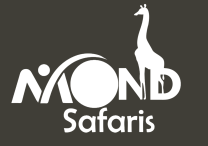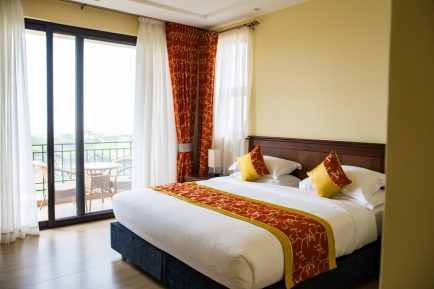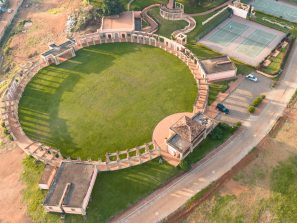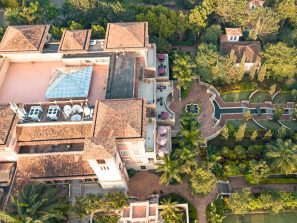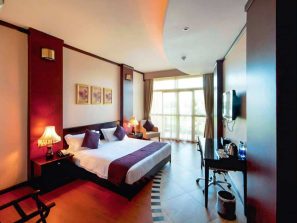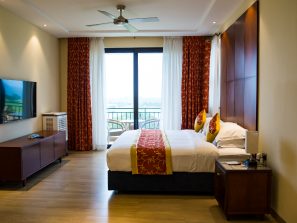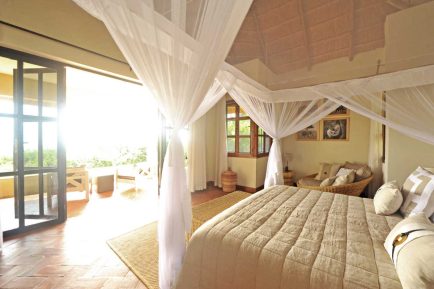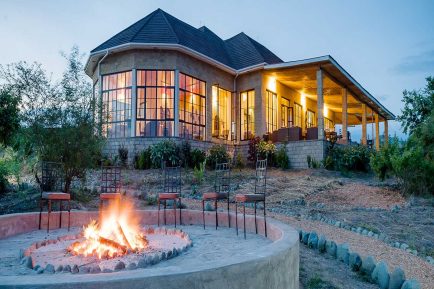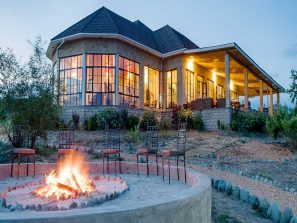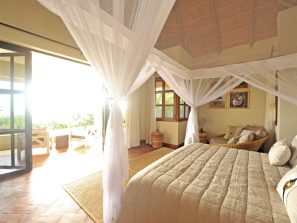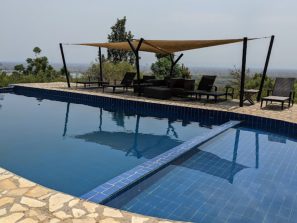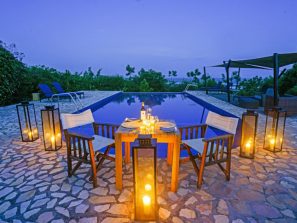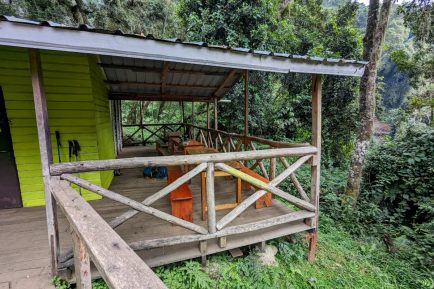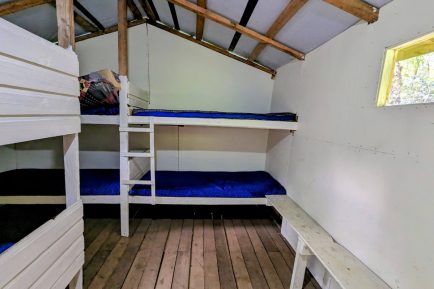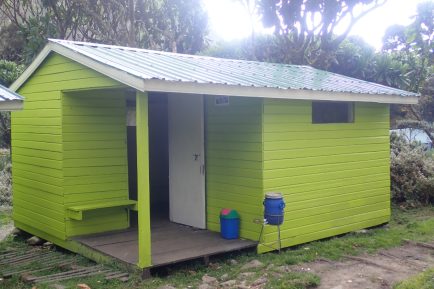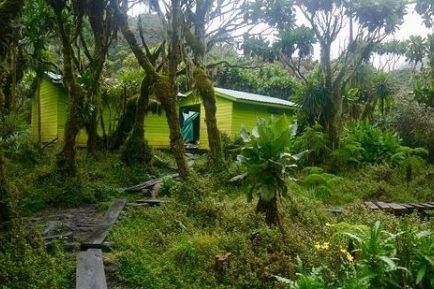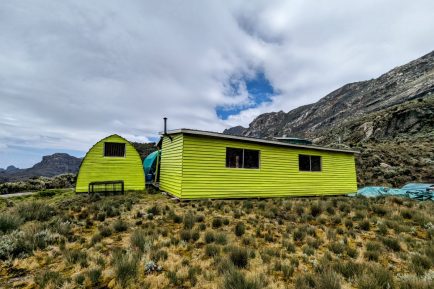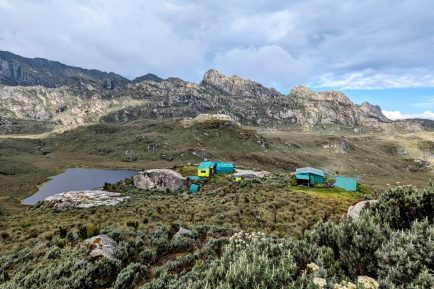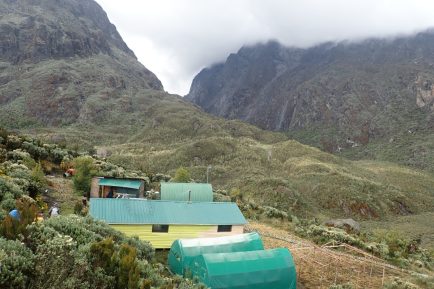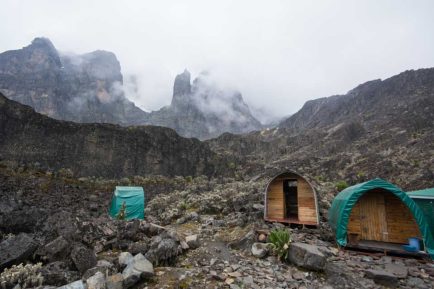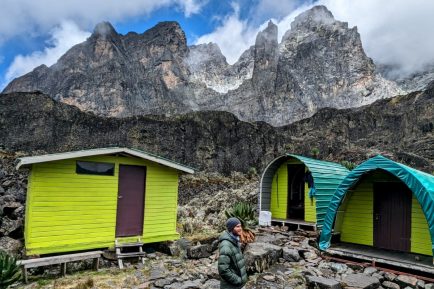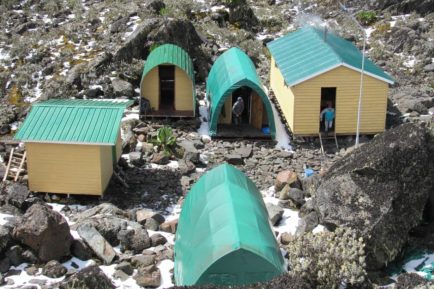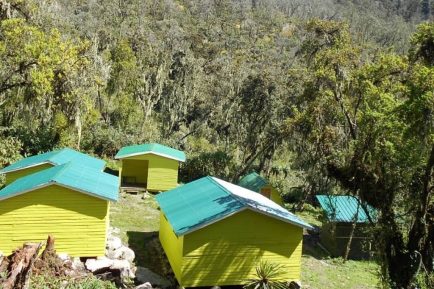Mount Rwenzori Climb & wildlife in Queen Elizabeth National Park
12-Day Mount Rwenzori Climb to Margherita Peak & wildlife in Queen Elizabeth National Park
DURATION
12 Days 11 Nights
STYLE
Wildlife Safari / Mt Hiking
PRICE GUIDE
$7450 Per Person
Margherita Peak, Africa's third highest peak, offers an unforgettable climbing experience. The real beauty lies in the ascent via the Kilembe route, where diverse flora and stunning forests and valleys await. You will walk through vibrant forests alive with various bird species and primates. Along the trail, you may spot chimp nests high in the tall trees and, if you're lucky, catch a glimpse of resident chimpanzees.
Climbing Margherita Peak involves more of a hard scramble than a technical climb, with a few challenging sections. When it snows, the climb becomes more difficult, but the rewards are immense. Reaching the summit provides an exhilarating sense of accomplishment, with breathtaking views across Albert Peak to the Democratic Republic of Congo (DRC) and the Rwenzori Mountains to the east.
All necessary climbing equipment, such as ropes, harnesses, carabiners, helmets, ice axes, ice screws, and ascenders, will be provided. You will need to bring your own good hiking boots, warm clothing, a warm sleeping bag, crampons, and rain gear to ensure a safe and comfortable climb.
INCLUDED IN THIS TRIP
•All entry fees to all parks
. Private boat safari in Queen Elizabeth National Park
.9 Nights accommodation throughout the hiking journey in dormitory-style huts along the trail.
. 2 Nights accommodation in luxury lodges.
. Guides & porters throughout the 12-days trip.
• All meals and soft Drinks
. 11 Nights accommodation
• Emergency medical evacuation and laundry services
• All ground transportation in 4x4 land cruiser
• All activities as indicated in the itinerary
• All Accommodation as indicated in the itinerary
• English-speaking Experienced Safari guide
Safari Notes
Accommodation: Although the itinerary price is based on the suggested accommodation, Mond Safaris offers fully customizable trips. Our specialists can assist you in choosing the accommodation option that aligns best with your preferences and budget.
What to Expect on this Mount Rwenzori Climb & Wildlife Safari in Queen Elizabeth National Park
Mount Rwenzori Climb:
Scenic Beauty: Experience breathtaking landscapes as you ascend the Rwenzori Mountains, known for their unique vegetation and stunning views. Expect lush forests, moss-covered trees, and beautiful alpine scenery.
Challenging Terrain: Prepare for a physically demanding trek with steep climbs and variable weather conditions. You’ll navigate through bamboo forests, boggy terrain, and rocky ridges, culminating in the ascent to Margherita Peak, Africa's third highest summit.
Diverse Flora and Fauna: Discover a range of plant species including giant lobelias and heathers. You may spot various primates like blue monkeys and black-and-white colobus monkeys, and potentially see rare L’Hoest monkeys.
Cold and Wet Weather: Be ready for cold temperatures and sudden snowfalls, especially at higher altitudes. Proper gear, including warm clothing, crampons, and rain gear, is essential.
High Altitude Challenges: Acclimatization is crucial. The trek involves significant altitude gain, so you should be prepared for potential altitude sickness and follow guidance from your experienced guides.
Wildlife Safari in Queen Elizabeth National Park:
Diverse Wildlife Viewing: Enjoy thrilling game drives and boat safaris in one of Uganda’s most famous parks. Expect to see elephants, buffaloes, lions, leopards, and numerous antelope species.
Scenic Landscapes: Marvel at the park’s varied landscapes, from savannahs and woodlands to the lush wetlands of the Kazinga Channel, which offers stunning views and abundant birdlife.
Bird Watching: The park is a birdwatcher's paradise with over 600 bird species. You may spot rare and endemic species including the shoebill stork and the African fish eagle.
Boat Safaris: Experience a unique perspective of wildlife along the Kazinga Channel. The boat trips offer close-up views of hippos, crocodiles, and numerous bird species.
Daily Routine
Each day will start early with breakfast, and we will begin our activities around 7:20 AM.
What to Pack for Your 12-Day Mount Rwenzori Climb to Margherita Peak & Wildlife Safari in Queen Elizabeth National Park
Travel Documents:
Passport and Ugandan visa
Travel insurance details
Vaccination certificate (e.g., Yellow Fever)
Clothing (Essential):
Summer Shirts and Shorts: Ideal for the warmer weather at the start of the trek.
Warm Long-Sleeved Shirts: To keep you warm as temperatures drop.
Warm Long Walking Trousers: Preferably not jeans, for comfort and protection.
Fleece Jacket: One or more, or a down jacket for extra warmth; alternatively, a lightweight, warm anorak.
Thermal Underwear: Essential for staying warm at higher altitudes.
Waterproof and Windproof Outer Shell: Both jacket and trousers to protect against rain and wind.
Rain Gear: A cheap plastic poncho or a quality rain jacket and rain pants.
Hat: A warm hat for cold weather and a sun hat with a peak to protect your neck.
Gloves: Two pairs—thin liners for warmth and a thicker, waterproof pair for protection.
Footwear:
Mountain Boots: Essential; ensure they are of good quality and well-worn-in.
Walking Shoes: A lighter pair of walking shoes or trainers for the initial trek.
Warm, Cushioned Socks: Several pairs to keep your feet dry and comfortable.
Crampons: Required for summit day; please bring your own pair.
Equipment (Essential):
Sleeping Bag: A high-quality sleeping bag rated for 4 seasons.
Soft Bag/Holdall or Rucksack: Large enough to carry your personal gear (limit 23kg); this will be carried by a porter.
Daypack: Sufficient to carry daily essentials such as water (3 liters), a lunchbox, camera, wet weather clothing, and a fleece jacket.
Protective Cover: For your rucksack and daypack, or pack contents in plastic bags for waterproofing.
Sunglasses: Preferably with side shields.
Lip Salve: To protect against chapped lips.
Head Torch: With spare batteries (special batteries are not always available locally).
Backup Torch: And extra batteries.
Water Bottle(s): Durable, to hold 3 liters of water daily.
Water Treatment Tablets/Iodine or Quality Filter: Although water will be boiled by our staff and served as tea or coffee, which can also be used to refill your bottles.
Spare Plastic Bags: For keeping items dry.
Wash Kit: Including a small towel.
Basic First Aid Kit: For personal use, including paracetamol and dehydration sachets.
Snacks: A few of your favorite sweets, chewies, or dried fruit for motivation on the trek.
Mount Rwenzori Climb & wildlife in Queen Elizabeth National Park Summary
Welcome to Entebbe, Uganda
Queen Elizabeth National Park
Mountain Rwenzori Hiking
Depart
Day by Day Itinerary
Day 1: Arrival at Entebbe, Uganda
Welcome to Uganda! Upon your arrival at Entebbe International Airport, a Mond Safaris representative will greet you as soon as you disembark from the plane. They will assist you through customs and baggage claim before introducing you to your tour guide. You will then be transferred to your hotel for relaxation and to acclimate to Uganda’s environment.
Accommodation: Lake Victoria Serena Golf Resort & Spa
Meal Plan: Dinner
Hotel Highlights
- Conveniently located on Lake Victoria between Kampala and Entebbe, perfect for a break before or after a gorilla trekking trip.
- Offers a championship golf course, spacious pool, luxurious spa, sauna, yoga and Tai Chi classes, cardio studio, beautiful mosaics, frescoes, fountains, terraced rose gardens, and various dining choices.
- Rooms feature an Italian-inspired design with all the latest amenities, including satellite TVs, Wi-Fi, and 24-hour room service.
Serena Lake Victoria Hotel Overview
Located between Kampala and Entebbe on Lake Victoria, Serena Lake Victoria Hotel is perfect for a rest stop before or after a gorilla trekking adventure in Bwindi Impenetrable National Park. Enjoy stunning lake views and a range of amenities. There's a championship golf course, a big pool, and a luxurious spa offering various treatments along with sauna, yoga, and Tai Chi classes, plus a cardio studio. The hotel grounds are relaxed with mosaics, fountains, and rose gardens. Dining options are plentiful, from casual bites by the pool to the 24-hour Citadel Restaurant serving extensive buffets for breakfast and lunch, and a dinner menu inspired by Uganda and the Mediterranean. Rooms are elegantly themed with modern amenities like satellite TVs, Wi-Fi, and 24-hour room service.
Day 2 & 3: Queen Elizabeth National Park
After breakfast, depart from Serena Hotel and head towards Queen Elizabeth National Park, located in the western part of Uganda. The drive will take approximately 5 to 7 hours. Along the way, you will stop for lunch before continuing to the park.
On day 3, Begin your day with a morning game drive in Queen Elizabeth National Park, where you can spot animals such as elephants, lions, Cape buffalo, and hyenas. In the afternoon, enjoy a private boat cruise on the Kazinga Channel, offering the chance to see crocodiles, various animals, and birds gathering around the water.
Meals: Breakfast, Lunch and dinner
Accommodation: Elephant Plains lodge
Hotel Highlights
Six grass-thatched cottages with floor-to-ceiling glass windows and doors, and large private verandas overlooking the lake.
Sizeable pool, comfy lounge, and restaurant serving international dishes with local flair.
Ideal for travelers looking for a luxurious and immersive wildlife experience in Queen Elizabeth National Park.
Spectacular location on top of the Northeast Escarpment of Queen Elizabeth Park, with sweeping views of flora and fauna
Elephant Plains Lodge overview
Elephant Plains Lodge sits high on the Northeast Escarpment of Queen Elizabeth Park, offering stunning views of the surrounding grasslands and wildlife. It’s close to Lake Kikorongo, where you can often see elephants coming to drink. This area is rich in grassland birds and is a key breeding spot for Ugandan Kob, which attracts predators like lions. The lodge has six grass-thatched cottages with large glass windows, doors, and private verandas overlooking the lake, where you can watch elephants and buffalos at sunset. There are also two family cottages with separate bedrooms for up to five guests. The lodge features a large pool, a cozy lounge, and a restaurant that serves international dishes with a local twist on an outdoor dining deck.
Day 4: Hike to Sine Camp (2,596 meters)
After an early breakfast, depart from Elephant Plains Lodge and transfer to the briefing center for preparations before starting your trek. Begin at Trekkers at 1,450 meters and hike up to Sine Hut at 2,596 meters, gaining 1,146 meters in elevation. For those who are fit and wish to continue, you can proceed to Kalalama Camp at 3,134 meters. This option offers fantastic views and provides more time at Mutinda Camp, where you can climb up to Mutinda Lookout at 3,975 meters.
We start by walking up the valley floor through the tall trees of the Afro-Montane Forest Zone. This is a steady climb filled with a multitude of birds and the possibility of seeing blue monkeys scampering through the forest. Visitors might spot troupes of 15 to 20 black and white Colobus monkeys swinging through the treetops. Occasionally, you may even see the rare L’Hoest monkeys, which are protected cultural emblems of the Bukonzo people, or hear wild chimpanzees in the distance.
The forest is rich in plant species, from towering trees to bamboo thickets, low shrubs, flowers, and fungi. Moss and lichen-covered vines hang from the tall trees, creating an enchanting atmosphere. Just 200 meters from Sine Hut are Enock’s Falls, a perfect spot to capture stunning photos.
At Sine Camp, located at 2,596 meters, wooden huts are nestled among tall forest trees on a narrow ridge. Here, you can enjoy the beauty of the Afro-Montane forest while gazing at a spectacular waterfall below. Some guests prefer to sit outside by the campfire, chatting with guides about the mountains and their community.
Sine Camp is just below the bamboo zone and is surrounded by a variety of bird species. Enock Falls, set in lush green vegetation and hanging vines, is only 150 meters from the camp. Those who are fit and wish to continue can proceed to Kalalama Camp at 3,134 meters. This offers fantastic views and provides more time at Mutinda Camp, where you can climb up to Mutinda Lookout at 3,975 meters.
Height gain: 1,146 meters
Distance: 9.5 kilometers
Approximate time: 5 to 7 hours of hiking
Meals: Breakfast, Lunch and Dinner
Accommodation: Sine Camp
Day 5: Hike to Mutinda Camp (3,588 meters)
The trek begins at 8:30 a.m., immediately entering the Bamboo-Mimulopsis Zone. This steep climb involves many high steps, and during the wet season, the bamboo zone can be muddy and slippery, slowing progress. However, the beauty of the forest makes the effort worthwhile as you ascend 551 meters over a distance of 1.8 km to reach Kalalama Camp at 3,147 meters, situated in the Heather-Rapanea Zone. Here, you can take a rest and enjoy a quick cup of tea or coffee before continuing to Mutinda Camp.
The trail meanders up and over several small knolls along a ridge top, then descends the side of the valley before climbing again. You will cross several small streams and pass moss-covered waterfalls. The climb continues steadily along the side of a beautiful mossy river, which tumbles over rocks under Giant Heather trees with trunks covered in green moss and old man’s beard lichen (Usnea) hanging from the branches. The trail twists and turns as you climb up the deep valley, filled with a diverse array of plants and flowers. This unique valley, often shrouded in mist, is home to many Giant Heather trees creating a beautiful atmosphere.
In the afternoon, you may choose to climb to the top of the Mutinda Lookout, which takes one to two hours up and one hour down. The views from the moss-covered rocks at 3,925 meters are breathtaking, offering panoramas of the Rwenzori Mountains, Kasese town, and Lake George. For those climbing to Margherita or other main peaks, reaching Mutinda at 3,975 meters is an excellent way to acclimatize and reduce the risk of high-altitude sickness.
Height gain: 992 meters
Distance: 6.1 kilometers
Approximate time: 5 to 7 hours of hiking
Meals: Breakfast, Lunch and Dinner
Accommodation: Mutinda Camp at 3,588 meters.
Day 6: Hike to Bugata Camp (4,100 meters)
The trail to Bugata Camp can be quite boggy, especially during the wet season, but with some skill, you can step from tussock to tussock to make the hike easier. First, you cross the Mutinda Valley, navigating through tussock grass and everlasting flowers interspersed with many Giant Lobelias. Afterward, you face a steep climb up to the Namusangi Valley at 3,840 meters, which features sheer waterfalls and offers fantastic views of Mutinda Peaks.
The Namusangi Valley is wide and filled with many ups and downs as the trail steadily climbs to Bugata Camp at 4,100 meters.
Height gain: 474 meters
Distance: 8.6 kilometers
Approximate time: 4 to 6 hours of hiking
Meals: Breakfast, Lunch and Dinner
Accommodation: Bugata Camp
Day 7: Hike to Hunwick's Camp (3,974 meters)
The trek to Hunwick's Camp takes you via the Bamwanjarra Pass. Leaving Bugata Camp, you ascend a ridge before a slight descent and then climb up to Bamwanjarra Pass at 4,450 meters, where there is a hut for shelter in case of bad weather. On a clear day, the pass offers excellent views of the three main peaks.
The trail descends the valley, winding around the edge of bogs and through thick evergreen vegetation, moss, giant groundsel, and lobelia. This area is possibly the best spot in all of the Rwenzori to observe the Malachite Sunbird feeding on lobelia flowers and is a known breeding site. Farther on, the trail includes some steep sections before a steady climb up and over a ridge to Hunwick's Camp. The camp is situated on the top of a deep valley and offers great views of Mount Stanley, Mount Baker, Weismann’s Peak, and McConnell’s Prong.
Height gain: 457 meters, then sleep 87 meters lower
Distance: 8.3 kilometers
Approximate time: 7 to 9 hours of hiking
Meals: Breakfast, Lunch and Dinner
Accommodation: Hunwick's Camp
Day 8: Hike to Margherita Camp (4,485 meters)
From Hunwick's Camp, you descend across the valley floor to the stunning Lake Kitandara, known for its deep water and beautiful vegetation. From there, you climb up Scott Elliott's Pass and then ascend the ridge to reach Margherita Camp at 4,485 meters. The camp is nestled between huge rocks, providing some shelter from the strong winds. This is the very spot where the Duke of Abruzzi camped during his climb to Margherita Peak in 1906.
Height gain: 510 meters
Distance: 5.1 kilometers
Approximate time: 4 to 6 hours of hiking
Meals: Breakfast, Lunch and Dinner
Accommodation: Margherita Camp
Day 9: Summit Margherita Peak (5,109 meters)
Wake up at 2 a.m. and have an early breakfast before starting the climb to Mt. Stanley at 2:30 a.m. This early start is necessary because the weather can change quickly, often bringing heavy clouds and snowfall from 1 p.m. to 4 p.m., even during the drier season. In January and February 2017, heavy snowstorms closed in unexpectedly, stranding climbers. Some groups returned to Margherita Camp well after dark, with one group arriving back at 11 p.m. completely exhausted.
To ensure safety, we have set a strict turnaround time of 10 a.m. If you have not reached the peak by then, you must turn around, regardless of the disappointment. Margherita Glacier has been affected by global warming, causing the outer edges to recede and the ice to become steeper, with one section having a more than 60% grade. The melting glacier has also created ice caves, which can cave in as the ice gets thinner. Therefore, it is crucial to follow the guides' advice on the safest paths.
For those with less mountaineering experience, we suggest staying on Stanley Glacier and climbing to a vantage point on a rocky outcrop on the southern edge of Alexandra Peak for fantastic views over Congo and the lower mountain ridges. After ascending the peak at 5,109 meters, you will descend directly to Hunwick's Camp at 3,874 meters.
Height gain: 624 meters, then descend 1,134 meters
Distance: 3.8 kilometers to the top, then 8.9 kilometers descent
Approximate time: 4 to 6 hours to the top, 3 to 5 hours back to Margherita, and 3 to 4 hours to Hunwick's Camp
Meals: Breakfast, Lunch and Dinner
Accommodation: Hunwick's Camp
Day 10: Descend to Kiharo Camp (3,430 meters)
From Hunwick's Camp, we begin the day by climbing up a ridge towards McConnell's Prong, where you get the best views of all three peaks and Scott Elliott's Pass before reaching Oliver's Pass at 4,505 meters. The distance from Hunwick's Camp to the top of Oliver's Pass is 3 km. The trail then cuts across below Weismann's Peak to the confluence of the Nyamwamba River, which flows through Kilembe and Kasese to Lake George in Queen Elizabeth National Park. On a clear day, you get fantastic views of Margherita, Mt. Stanley, Mt. Speke, and Mt. Baker.
After crossing the confluence, the trail meanders down the valley to Kiharo Camp, situated in a deep valley with high cliffs and dense vegetation. On the way down the valley, after each bog, you will climb over a ridge of stones and earth that seems out of place but was actually pushed there by slow-moving glaciers. These glaciers eventually stopped moving, melted, and left a pile of rocks and debris in front of where the glacier once stood.
Height gain: Climb 530 meters, then descend 1,075 meters
Distance: 15.8 kilometers
Approximate time: 9 to 12 hours of hiking
Meals: Breakfast, Lunch and Dinner
Accommodation: Kiharo Camp
Day 11: Descend to the Basecamp (1,450 meters) and transfer to hotel in Queen Elizabeth National Park
The trek from Kiharo Camp to the park gate covers 12.2 kilometers, followed by an additional 2.8 kilometers down to Trekkers Hostel. Expect the descent to take between 5 to 8 hours, so those needing to catch flights back to Kampala or continue on to other activities should leave Kiharo Camp early.
The trail down the Nyamwamba Valley is predominantly downhill and offers breathtaking scenery. You'll traverse moss-covered rocks along the river, see cascading waterfalls, and pass through deep valleys and lush forests—some of the most stunning in the Rwenzori Mountains. Finding this route took six years, and it was once a challenge to navigate. In 1937, explorer and geologist McConnell attempted to find a route up the valley but had to turn back.
A few kilometers from Kiharo Camp, the trail veers right along the river. In the clearer areas, you might spot a Duiker feeding in small clearings. If you prefer, you can hop across rocks in the river. However, as the river becomes steeper with numerous waterfalls, you'll need to move away and follow a narrow ridge to bypass these sections. At the bottom, you will find a large rock shelter where you can rest. After crossing a small stream, you will climb a gentle slope before descending back to the river to avoid another set of impassable waterfalls. The forest in this section is vibrant and teeming with life, including birds, primates, duikers, and hyrax. This is a fantastic end to a memorable trek. you will meet your guide ready to transfer to the elephant plains lodge in Queen Elizabeth National Park
Height loss: 1,980 meters
Distance: 16 kilometers
Approximate time: 7 to 8 hours of descending
Meals: Breakfast, Lunch and Dinner
Accommodation: Elephant Plains lodge
Hotel Highlights
Six grass-thatched cottages with floor-to-ceiling glass windows and doors, and large private verandas overlooking the lake.
Sizeable pool, comfy lounge, and restaurant serving international dishes with local flair.
Ideal for travelers looking for a luxurious and immersive wildlife experience in Queen Elizabeth National Park.
Spectacular location on top of the Northeast Escarpment of Queen Elizabeth Park, with sweeping views of flora and fauna
Elephant Plains Lodge overview
Elephant Plains Lodge sits high on the Northeast Escarpment of Queen Elizabeth Park, offering stunning views of the surrounding grasslands and wildlife. It’s close to Lake Kikorongo, where you can often see elephants coming to drink. This area is rich in grassland birds and is a key breeding spot for Ugandan Kob, which attracts predators like lions. The lodge has six grass-thatched cottages with large glass windows, doors, and private verandas overlooking the lake, where you can watch elephants and buffalos at sunset. There are also two family cottages with separate bedrooms for up to five guests. The lodge features a large pool, a cozy lounge, and a restaurant that serves international dishes with a local twist on an outdoor dining deck.
Day 12: Departure
Begin your day with a delicious breakfast at the lodge as you prepare for your departure. In the morning, we will leave Elephant Plains Lodge and head to Entebbe International Airport for your evening flight. Lunch will be served en route, and we expect to arrive at the airport around 4:00 PM.
Meals: Breakfast and Lunch
What is Not Included
Quick Navigation
Uganda Gorilla Safari
Duration: 12 Days 11 Nights
Style: wildlife safari / Mt Hike
When to go: Year Round
Other Popular African Safari Destinations
Are you still in search of inspiration? we believe you may also enjoy exploring these other East African safari destinations.
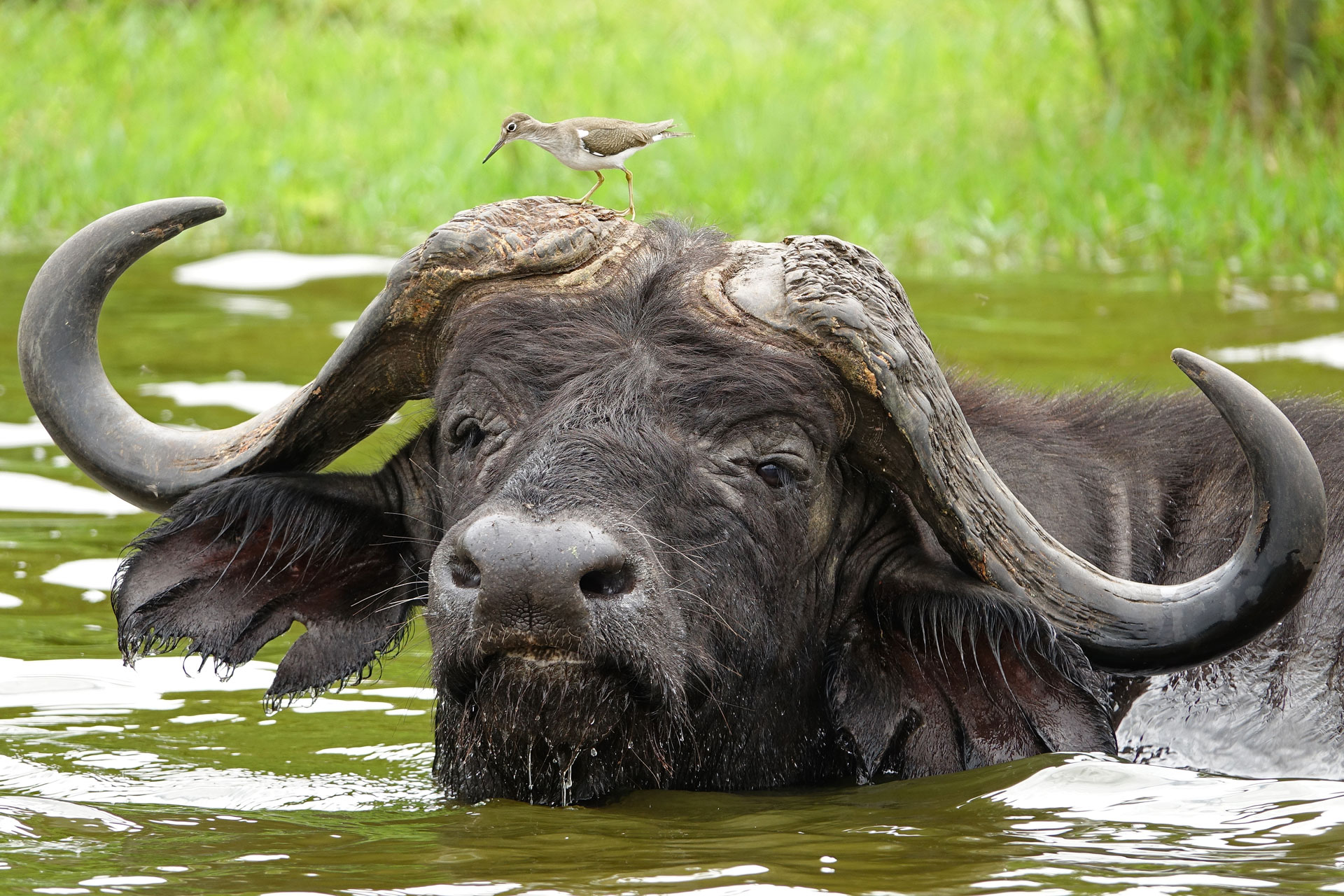
Why Mond?
Why Safari with Mond
We understand that every traveler is unique, with different interests, preferences, and expectations. That’s why we specialize in creating tailor-made tours
Our team works diligently to negotiate the best rates with our partners
and suppliers, allowing us to pass on the savings directly to you
Our experienced team of travel experts is readily available to answer any questions
What Our Clients Say
Mond Safaris Reviews
